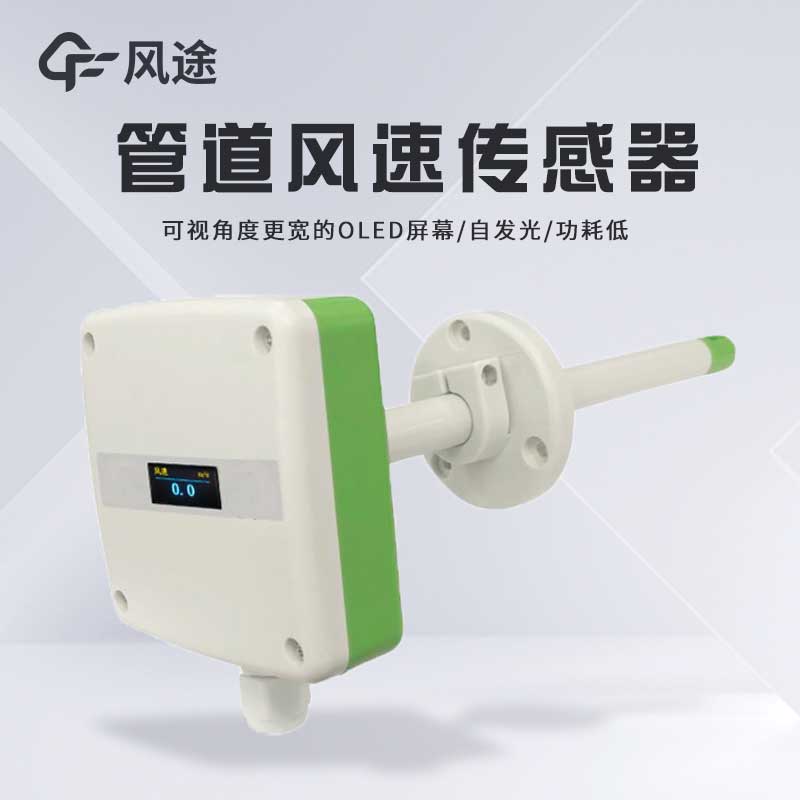Shandong Fengtu IOT Technology Co., Ltd
Sales Manager:Ms. Emily Wang
Cel,Whatsapp,Wechat:+86 15898932201
Email:info@fengtutec.com
Add:No. 155 Optoelectronic Industry Accelerator, Gaoxin District, Weifang, Shandong, China

Sales Manager:Ms. Emily Wang
Cel,Whatsapp,Wechat:+86 15898932201
Email:info@fengtutec.com
Add:No. 155 Optoelectronic Industry Accelerator, Gaoxin District, Weifang, Shandong, China
time:2024-10-09 08:42:11 source:Weather Station viewed:482 time
In weather monitoring and many industrial fields, accurate measurement of wind speed holds a crucial position. In addition to the common cup anemometers and ultrasonic anemometers, although duct wind speed transmitters are not often well-known to the general public, they have extensive applications.
It is meticulously designed specifically for duct wind speed measurement. Widely applicable in ventilation ducts, HVAC systems, flue gas ducts, papermaking, meteorology, pharmaceuticals, and chemical industries, it can perform online real-time monitoring of wind speed or air volume.
In terms of performance, it has independently developed a high-precision wind speed measurement unit, which is extremely sensitive and can quickly and accurately measure small wind speeds. It also has good stability, extremely small drift, and high accuracy. It can also accurately calculate the real-time air volume value according to the set cross-sectional area of the measured duct. In terms of detection principle, it uses the hot wire balance principle for wind speed measurement, with fast response speed and small starting wind speed.
In terms of calibration method, it uses the company's independently developed full-range secondary calibration method, ensuring good linearity and extremely high accuracy. The wiring method is also very convenient. The wiring terminals are military-grade spring-type screwless terminals. Wiring can be completed by simply pressing and inserting. Even without a screwdriver on site, wiring can be quickly completed. It can adapt to wire diameters of 0.3 to 2.0mm².
The duct wind speed sensor can measure multiple elements, including real-time duct wind speed. The RS485 type can also optionally measure the air volume value in the duct. Signal outputs include RS485, 4 - 20mA, 0 - 5V, 0 - 10V, and other forms. Parameter modification is also relatively flexible. The device address and baud rate can be changed through 485 commands, and the duct cross-sectional area can be set. The 485 type can provide professional configuration tools to configure device parameters, and the 485 slave can also be adjusted through hardware DIP switches. The probe wire length is 1m by default and can be adjusted according to actual needs. The longest can reach 100m, but it is necessary to ensure that there is no interference around the wire.
Its power supply mode is 10 - 30V DC, the maximum power consumption is only 0.5W, and the measurement media includes air, nitrogen, oil fume exhaust gas, etc. In terms of accuracy, different measurement ranges have different accuracy standards. The circuit operating temperature is -10℃ to +50℃. The wind speed display resolution is 0.1m/s, the response time is 2S, and the long-term stability is ≤0.1m/s/year.

Soil moisture monitoring plays a vital role in agriculture and farming. By monitoring moisture and water content changes in the soil, it plays a key role in the growth and development of crops and provides important support in drought relief. The integrated multi-depth soil moisture monitoring syste...
Which is the best manufacturer of river water level real-time monitoring system? Shandong Fengtuo Technology is a high-tech enterprise specializing in the research and development, production and sales of river water level real-time monitoring system. The company has a wealth of experience in produc...
Building an Atmospheric Environment Monitoring System requires consideration from multiple aspects. First, regarding site layout, scientific planning should be carried out based on factors such as urban functional zoning, population distribution, and the location of pollution sources. Urban points f...
What is the significance of rainfall station construction? What role does it play in urban flood control? How to do a good job in rainwater collection, distribution and utilization to provide guarantee for storm disaster prevention? These problems need us to explore constantly.Rainfall gauge station...